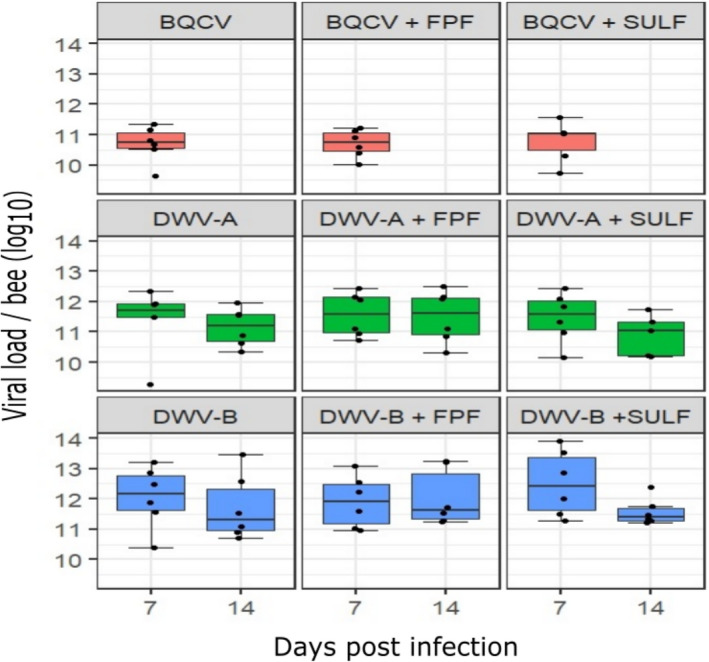Fig. 2.

BQCV, DWV‐A and DWV‐B genome equivalents (log10) per adult honey bee (n = 6 bees per treatment and time point) at 7 and 14 days post inoculation (boxplots show median, interquartiles and 95% confidence intervals, with jittered data points). Bees were injected with 107 BQCV, DWV‐A or DWV‐B then treated with sublethal concentrations of either FPF (4.300 µg ml−1) or SULF (0.047 µg ml−1) pesticides or a control solution for 30 days under laboratory conditions. There was no significant difference in viral load between virus‐exposed bees versus those co‐exposed to virus and pesticide at the two time points (LM (ANOVA Type II tests), P > 0.05). Control and pesticide‐only treated bees were devoid of virus at 7 and 14 days post inoculation. For statistical details, see Table S2.
